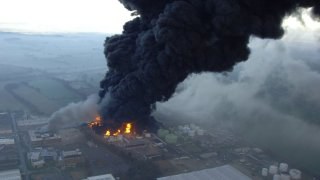The report “Mapping the impacts of natural hazards and technological accidents in Europe” analyzes hydrometeorological (e.g., storms, floods), geophysical (e.g., earthquakes), and technological hazards (e.g., oil spills). It finds that increased losses are mostly due to more human activity in hazard-prone areas, with better reporting also contributing. Over the period covered, disasters led to nearly 100,000 fatalities, over 11 million affected, and economic losses around EUR 150 billion, with extreme heat events causing over 70,000 deaths in 2003 alone.
Floods and storms were the costliest hazards, accounting for EUR 52 billion and EUR 44 billion in losses, respectively. Geophysical hazards remained stable, while technological accidents had severe ecological impacts, notably from oil spills in 1999 and 2002.
The report emphasizes the need for an Integrated Risk Management approach within the EU, advocating for better local measures and comprehensive data systems to support disaster management. Existing EU policies, such as the Floods Directive and Seveso II Directive, are noted but further implementation is necessary.
Source link


